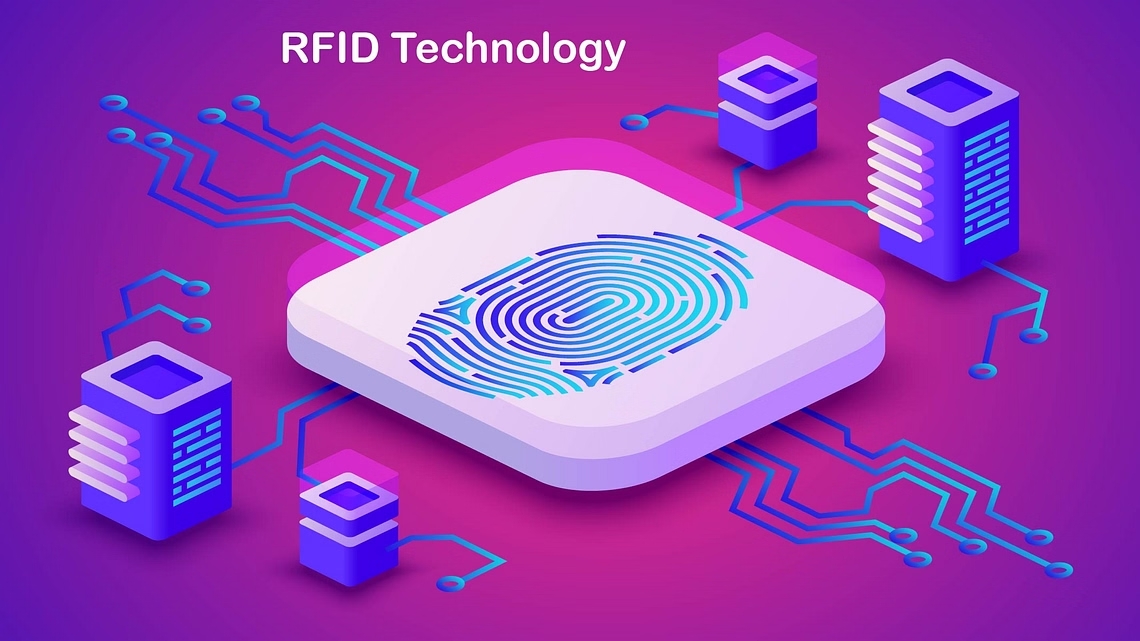In today’s business world, the use of technology has become essential for maintaining good record keeping and inventory management. With the introduction of RFID (radio-frequency identification) technology in handheld devices such as PDAs and smartphones, tracking items through various stages in the supply chain has become even more accessible.
In this article, you will get to read about how easy inventory operation handling has become with handheld devices and RFID. So, continue reading.

What is RFID?
RFID stands for radio-frequency identification. It is a wireless technology that uses electromagnetic fields to identify, track and locate tags attached to objects automatically. The most common type of RFID tag is a small plastic card called an RFID transponder. These tags can be read at short ranges, usually less than 10 cm (4 inches), but can be read from several meters away in some cases.
The reader emits radio waves which are reflected back by the antennas in the RFID transponder. This enables the identification of specific objects such as products, vehicles, or baggage within seconds based on their unique electronic serial number (ESN).
Is your inventory management system missing features like RFID tracking? Don’t worry, ERP Experts at Silent Infotech can help with cutting-edge ERP Solution. Speak with our consultant now!
What Is Handheld Mobile Devices & How Does A Handheld Device Communicate With The Database?
The Mobile handheld scanner is used to scan the RFID tag. The RFID reader will read data from the tag and send it to the database through a network connection. Each handheld device has its own unique ID, which is stored in the database when you register it as new.
The database will then compare this ID with information in its own table of all registered devices and provide information about that specific handheld device based on what is stored in its own table. The database can also be used to store information about all registered handheld devices. If a Mobile Device is lost or stolen, the user can log into their account and deactivate it so that no one else can use it.

Get FREE Consultation
The Solution To Making Inventory Operation Easy Using Handheld
Our solution manages inventory operation by location, and every location has its own RFID tag attached. For example, If a company has 3 locations, then the database can be maintained in a way that each location will have its own RFID tag attached to it.
Suppose you are going to purchase some items from store A. In that case, you need to scan the item’s barcode or simply place the tag near store A’s RFID reader, which will automatically transfer all data regarding whether the item is available at store A.

Once this information is transferred, the database system will display information such as price, the quantity of stock, etc. If we find any issue with the database, we can resolve it efficiently by uploading updated information into the database system using a handheld device and RFID reader.
This kind of
How it Works?
- RFID tags are attached to each product that needs to be tracked. These tags contain information about a specific product, such as its name and price.
- The RFID reader takes this information from the tag and stores it in its internal memory. The handheld device is then used to communicate with the reader via Bluetooth, sending commands to save or retrieve data from the reader’s memory.
- Data can also be sent from the handheld device directly over Wi-Fi or cellular networks (LTE) using an internet connection, so long as both devices have access to the same network.
- The handheld mobile device allows users to access information about products in real time, which can be extremely useful for businesses that need to monitor their inventory in Warehouse. The handheld device works together with the RFID reader to provide a complete
inventory management solution.
What are you waiting for?
Speak with ERP Specialist to get the best inventory management solution for your business.
Benefits
For a small business, inventory is an integral part of its operations. The inventory must be properly maintained and managed to help make better decisions. This can be done by using
The RFID handheld device comes equipped with a barcode reader, which helps in reading and identifying items at the point-of-sale (POS) or any other location where they are being used. In addition to that, it can also be used to read serial numbers on products using an app called Easy Inventory Control (EIC). Using these two features together makes tracking items much more accessible than ever before!
The handheld device also comes with a rechargeable battery that lasts up to eight hours on a single charge. It also has an LCD screen that displays all the information you need in an easy-to-read format. The device is compatible with Windows and Mac operating systems so that it can be used on any computer without any issues.
Conclusion
Inventory operation is a very important task in a business, and it can be carried out in many ways. However, handheld devices and RFID technology are the most efficient ways of doing it. They have various advantages over other methods, like faster processing speed and less time is taken to complete an inventory operation.